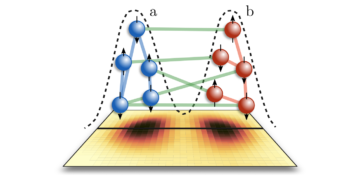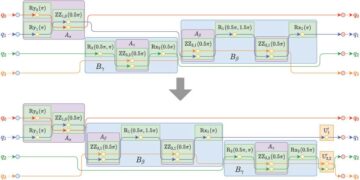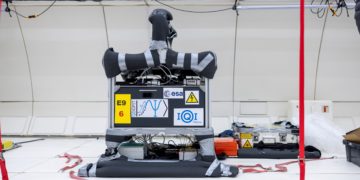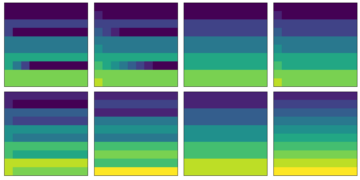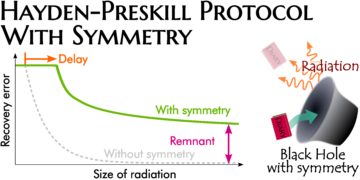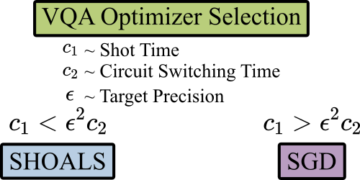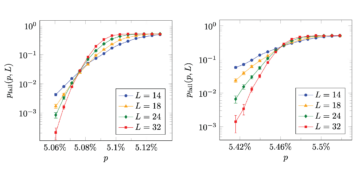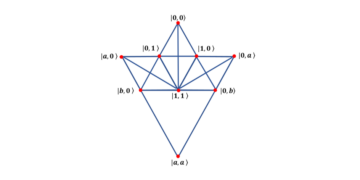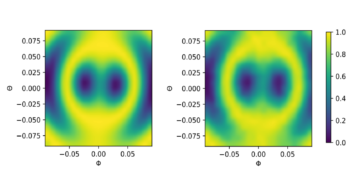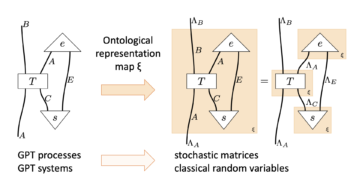
1Department of Physics and Arnold Sommerfeld Center for Theoretical Physics (ASC), Ludwig-Maximilians-Universität München, Theresienstraße 37, D-80333 München, Germany
2Munich Center for Quantum Science and Technology (MCQST), Schellingstraße 4, D-80799 München, Germany
3Institute for Condensed Matter Physics and Complex Systems, DISAT, Politecnico di Torino, I-10129 Torino, Italy
4INO-CNR BEC Center and Department of Physics, University of Trento, Via Sommarive 14, I-38123 Trento, Italy
5ITAMP, Harvard-Smithsonian Center for Astrophysics, Cambridge, MA 02138, USA
6Department of Physics, Harvard University, Cambridge, Massachusetts 02138, USA
Find this paper interesting or want to discuss? Scite or leave a comment on SciRate.
Abstract
Quantum many-body scarring is a paradigm of weak ergodicity breaking arising due to the presence of special nonthermal many-body eigenstates that possess low entanglement entropy, are equally spaced in energy, and concentrate in certain parts of the Hilbert space. Though scars have been shown to be intimately connected to gauge theories, their stability in such experimentally relevant models is still an open question, and it is generally considered that they exist only under fine-tuned conditions. In this work, we show through Krylov-based time-evolution methods how quantum many-body scars can be made robust in the presence of experimental errors through utilizing terms linear in the gauge-symmetry generator or a simplified pseudogenerator in $mathrm{U}(1)$ and $mathbb{Z}_2$ lattice gauge theories. Our findings are explained by the concept of quantum Zeno dynamics. Our experimentally feasible methods can be readily implemented in existing large-scale ultracold-atom quantum simulators and setups of Rydberg atoms with optical tweezers.
► BibTeX data
► References
[1] J. M. Deutsch. “Quantum statistical mechanics in a closed system”. Phys. Rev. A 43, 2046–2049 (1991).
https://doi.org/10.1103/PhysRevA.43.2046
[2] Mark Srednicki. “Chaos and quantum thermalization”. Phys. Rev. E 50, 888–901 (1994).
https://doi.org/10.1103/PhysRevE.50.888
[3] Pasquale Calabrese and John Cardy. “Evolution of entanglement entropy in one-dimensional systems”. Journal of Statistical Mechanics: Theory and Experiment 2005, P04010 (2005).
https://doi.org/10.1088/1742-5468/2005/04/p04010
[4] Luigi Amico, Rosario Fazio, Andreas Osterloh, and Vlatko Vedral. “Entanglement in many-body systems”. Rev. Mod. Phys. 80, 517–576 (2008).
https://doi.org/10.1103/RevModPhys.80.517
[5] A. J. Daley, H. Pichler, J. Schachenmayer, and P. Zoller. “Measuring entanglement growth in quench dynamics of bosons in an optical lattice”. Phys. Rev. Lett. 109, 020505 (2012).
https://doi.org/10.1103/PhysRevLett.109.020505
[6] J. Schachenmayer, B. P. Lanyon, C. F. Roos, and A. J. Daley. “Entanglement growth in quench dynamics with variable range interactions”. Phys. Rev. X 3, 031015 (2013).
https://doi.org/10.1103/PhysRevX.3.031015
[7] Marcos Rigol, Vanja Dunjko, and Maxim Olshanii. “Thermalization and its mechanism for generic isolated quantum systems”. Nature 452, 854–858 (2008).
https://doi.org/10.1038/nature06838
[8] J. Eisert, M. Friesdorf, and C. Gogolin. “Quantum many-body systems out of equilibrium”. Nature Physics 11, 124–130 (2015).
https://doi.org/10.1038/nphys3215
[9] Luca D’Alessio, Yariv Kafri, Anatoli Polkovnikov, and Marcos Rigol. “From quantum chaos and eigenstate thermalization to statistical mechanics and thermodynamics”. Advances in Physics 65, 239–362 (2016).
https://doi.org/10.1080/00018732.2016.1198134
[10] Joshua M Deutsch. “Eigenstate thermalization hypothesis”. Reports on Progress in Physics 81, 082001 (2018).
https://doi.org/10.1088/1361-6633/aac9f1
[11] Adam M. Kaufman, M. Eric Tai, Alexander Lukin, Matthew Rispoli, Robert Schittko, Philipp M. Preiss, and Markus Greiner. “Quantum thermalization through entanglement in an isolated many-body system”. Science 353, 794–800 (2016).
https://doi.org/10.1126/science.aaf6725
[12] B. Sutherland. “Beautiful models: 70 years of exactly solved quantum many-body problems”. World Scientific Publishing Company. (2004). url: https://books.google.de/books?id=ze87DQAAQBAJ.
https://books.google.de/books?id=ze87DQAAQBAJ
[13] Marcos Rigol, Vanja Dunjko, Vladimir Yurovsky, and Maxim Olshanii. “Relaxation in a completely integrable many-body quantum system: An ab initio study of the dynamics of the highly excited states of 1d lattice hard-core bosons”. Phys. Rev. Lett. 98, 050405 (2007).
https://doi.org/10.1103/PhysRevLett.98.050405
[14] Lev Vidmar and Marcos Rigol. “Generalized gibbs ensemble in integrable lattice models”. Journal of Statistical Mechanics: Theory and Experiment 2016, 064007 (2016).
https://doi.org/10.1088/1742-5468/2016/06/064007
[15] D.M. Basko, I.L. Aleiner, and B.L. Altshuler. “Metal–insulator transition in a weakly interacting many-electron system with localized single-particle states”. Annals of Physics 321, 1126–1205 (2006).
https://doi.org/10.1016/j.aop.2005.11.014
[16] Rahul Nandkishore and David A. Huse. “Many-body localization and thermalization in quantum statistical mechanics”. Annual Review of Condensed Matter Physics 6, 15–38 (2015). arXiv:https://doi.org/10.1146/annurev-conmatphys-031214-014726.
https://doi.org/10.1146/annurev-conmatphys-031214-014726
arXiv:https://doi.org/10.1146/annurev-conmatphys-031214-014726
[17] Fabien Alet and Nicolas Laflorencie. “Many-body localization: An introduction and selected topics”. Comptes Rendus Physique 19, 498–525 (2018).
https://doi.org/10.1016/j.crhy.2018.03.003
[18] Dmitry A. Abanin, Ehud Altman, Immanuel Bloch, and Maksym Serbyn. “Colloquium: Many-body localization, thermalization, and entanglement”. Rev. Mod. Phys. 91, 021001 (2019).
https://doi.org/10.1103/RevModPhys.91.021001
[19] J. Smith, A. Lee, P. Richerme, B. Neyenhuis, P. W. Hess, P. Hauke, M. Heyl, D. A. Huse, and C. Monroe. “Many-body localization in a quantum simulator with programmable random disorder”. Nature Physics 12, 907–911 (2016).
https://doi.org/10.1038/nphys3783
[20] Jae-yoon Choi, Sebastian Hild, Johannes Zeiher, Peter Schauß, Antonio Rubio-Abadal, Tarik Yefsah, Vedika Khemani, David A. Huse, Immanuel Bloch, and Christian Gross. “Exploring the many-body localization transition in two dimensions”. Science 352, 1547–1552 (2016).
https://doi.org/10.1126/science.aaf8834
[21] M. Schulz, C. A. Hooley, R. Moessner, and F. Pollmann. “Stark many-body localization”. Phys. Rev. Lett. 122, 040606 (2019).
https://doi.org/10.1103/PhysRevLett.122.040606
[22] Thivan Gunawardana and Berislav Buča. “Dynamical l-bits in stark many-body localization” (2022). arXiv:2110.13135.
arXiv:2110.13135
[23] W. Morong, F. Liu, P. Becker, K. S. Collins, L. Feng, A. Kyprianidis, G. Pagano, T. You, A. V. Gorshkov, and C. Monroe. “Observation of stark many-body localization without disorder”. Nature 599, 393–398 (2021).
https://doi.org/10.1038/s41586-021-03988-0
[24] A. Smith, J. Knolle, D. L. Kovrizhin, and R. Moessner. “Disorder-free localization”. Phys. Rev. Lett. 118, 266601 (2017).
https://doi.org/10.1103/PhysRevLett.118.266601
[25] Marlon Brenes, Marcello Dalmonte, Markus Heyl, and Antonello Scardicchio. “Many-body localization dynamics from gauge invariance”. Phys. Rev. Lett. 120, 030601 (2018).
https://doi.org/10.1103/PhysRevLett.120.030601
[26] Alexandros Metavitsiadis, Angelo Pidatella, and Wolfram Brenig. “Thermal transport in a two-dimensional ${mathbb{z}}_{2}$ spin liquid”. Phys. Rev. B 96, 205121 (2017).
https://doi.org/10.1103/PhysRevB.96.205121
[27] A. Smith, J. Knolle, R. Moessner, and D. L. Kovrizhin. “Absence of ergodicity without quenched disorder: From quantum disentangled liquids to many-body localization”. Phys. Rev. Lett. 119, 176601 (2017).
https://doi.org/10.1103/PhysRevLett.119.176601
[28] Adam Smith, Johannes Knolle, Roderich Moessner, and Dmitry L. Kovrizhin. “Dynamical localization in ${{mathbb{z}}}_{2}$ lattice gauge theories”. Phys. Rev. B 97, 245137 (2018).
https://doi.org/10.1103/PhysRevB.97.245137
[29] Angelo Russomanno, Simone Notarnicola, Federica Maria Surace, Rosario Fazio, Marcello Dalmonte, and Markus Heyl. “Homogeneous floquet time crystal protected by gauge invariance”. Phys. Rev. Research 2, 012003 (2020).
https://doi.org/10.1103/PhysRevResearch.2.012003
[30] Irene Papaefstathiou, Adam Smith, and Johannes Knolle. “Disorder-free localization in a simple $u(1)$ lattice gauge theory”. Phys. Rev. B 102, 165132 (2020).
https://doi.org/10.1103/PhysRevB.102.165132
[31] P. Karpov, R. Verdel, Y.-P. Huang, M. Schmitt, and M. Heyl. “Disorder-free localization in an interacting 2d lattice gauge theory”. Phys. Rev. Lett. 126, 130401 (2021).
https://doi.org/10.1103/PhysRevLett.126.130401
[32] Oliver Hart, Sarang Gopalakrishnan, and Claudio Castelnovo. “Logarithmic entanglement growth from disorder-free localization in the two-leg compass ladder”. Phys. Rev. Lett. 126, 227202 (2021).
https://doi.org/10.1103/PhysRevLett.126.227202
[33] Guo-Yi Zhu and Markus Heyl. “Subdiffusive dynamics and critical quantum correlations in a disorder-free localized kitaev honeycomb model out of equilibrium”. Phys. Rev. Research 3, L032069 (2021).
https://doi.org/10.1103/PhysRevResearch.3.L032069
[34] John Sous, Benedikt Kloss, Dante M. Kennes, David R. Reichman, and Andrew J. Millis. “Phonon-induced disorder in dynamics of optically pumped metals from nonlinear electron-phonon coupling”. Nature Communications 12, 5803 (2021).
https://doi.org/10.1038/s41467-021-26030-3
[35] Nilotpal Chakraborty, Markus Heyl, Petr Karpov, and Roderich Moessner. “Disorder-free localization transition in a two-dimensional lattice gauge theory”. Phys. Rev. B 106, L060308 (2022).
https://doi.org/10.1103/PhysRevB.106.L060308
[36] Jad C. Halimeh, Hongzheng Zhao, Philipp Hauke, and Johannes Knolle. “Stabilizing disorder-free localization” (2021). arXiv:2111.02427.
arXiv:2111.02427
[37] Jad C. Halimeh, Lukas Homeier, Hongzheng Zhao, Annabelle Bohrdt, Fabian Grusdt, Philipp Hauke, and Johannes Knolle. “Enhancing disorder-free localization through dynamically emergent local symmetries”. PRX Quantum 3, 020345 (2022).
https://doi.org/10.1103/PRXQuantum.3.020345
[38] Haifeng Lang, Philipp Hauke, Johannes Knolle, Fabian Grusdt, and Jad C. Halimeh. “Disorder-free localization with stark gauge protection”. Phys. Rev. B 106, 174305 (2022).
https://doi.org/10.1103/PhysRevB.106.174305
[39] C. J. Turner, A. A. Michailidis, D. A. Abanin, M. Serbyn, and Z. Papić. “Weak ergodicity breaking from quantum many-body scars”. Nature Physics 14, 745–749 (2018).
https://doi.org/10.1038/s41567-018-0137-5
[40] Maksym Serbyn, Dmitry A. Abanin, and Zlatko Papić. “Quantum many-body scars and weak breaking of ergodicity”. Nature Physics 17, 675–685 (2021).
https://doi.org/10.1038/s41567-021-01230-2
[41] Sanjay Moudgalya, B Andrei Bernevig, and Nicolas Regnault. “Quantum many-body scars and hilbert space fragmentation: a review of exact results”. Reports on Progress in Physics 85, 086501 (2022).
https://doi.org/10.1088/1361-6633/ac73a0
[42] Hongzheng Zhao, Adam Smith, Florian Mintert, and Johannes Knolle. “Orthogonal quantum many-body scars”. Phys. Rev. Lett. 127, 150601 (2021).
https://doi.org/10.1103/PhysRevLett.127.150601
[43] Naoto Shiraishi and Takashi Mori. “Systematic construction of counterexamples to the eigenstate thermalization hypothesis”. Phys. Rev. Lett. 119, 030601 (2017).
https://doi.org/10.1103/PhysRevLett.119.030601
[44] Sanjay Moudgalya, Stephan Rachel, B. Andrei Bernevig, and Nicolas Regnault. “Exact excited states of nonintegrable models”. Phys. Rev. B 98, 235155 (2018).
https://doi.org/10.1103/PhysRevB.98.235155
[45] Sanjay Moudgalya, Nicolas Regnault, and B. Andrei Bernevig. “Entanglement of exact excited states of Affleck-Kennedy-Lieb-Tasaki models: Exact results, many-body scars, and violation of the strong eigenstate thermalization hypothesis”. Phys. Rev. B 98, 235156 (2018).
https://doi.org/10.1103/PhysRevB.98.235156
[46] Cheng-Ju Lin and Olexei I. Motrunich. “Exact quantum many-body scar states in the Rydberg-blockaded atom chain”. Phys. Rev. Lett. 122, 173401 (2019).
https://doi.org/10.1103/PhysRevLett.122.173401
[47] Michael Schecter and Thomas Iadecola. “Weak ergodicity breaking and quantum many-body scars in spin-1 XY magnets”. Phys. Rev. Lett. 123, 147201 (2019).
https://doi.org/10.1103/PhysRevLett.123.147201
[48] Daniel K. Mark, Cheng-Ju Lin, and Olexei I. Motrunich. “Unified structure for exact towers of scar states in the Affleck-Kennedy-Lieb-Tasaki and other models”. Phys. Rev. B 101, 195131 (2020).
https://doi.org/10.1103/PhysRevB.101.195131
[49] Hannes Bernien, Sylvain Schwartz, Alexander Keesling, Harry Levine, Ahmed Omran, Hannes Pichler, Soonwon Choi, Alexander S. Zibrov, Manuel Endres, Markus Greiner, Vladan Vuletić, and Mikhail D. Lukin. “Probing many-body dynamics on a 51-atom quantum simulator”. Nature 551, 579–584 (2017).
https://doi.org/10.1038/nature24622
[50] Hongzheng Zhao, Joseph Vovrosh, Florian Mintert, and Johannes Knolle. “Quantum many-body scars in optical lattices”. Phys. Rev. Lett. 124, 160604 (2020).
https://doi.org/10.1103/PhysRevLett.124.160604
[51] Guo-Xian Su, Hui Sun, Ana Hudomal, Jean-Yves Desaules, Zhao-Yu Zhou, Bing Yang, Jad C. Halimeh, Zhen-Sheng Yuan, Zlatko Papić, and Jian-Wei Pan. “Observation of many-body scarring in a bose-hubbard quantum simulator”. Phys. Rev. Res. 5, 023010 (2023).
https://doi.org/10.1103/PhysRevResearch.5.023010
[52] Federica M. Surace, Paolo P. Mazza, Giuliano Giudici, Alessio Lerose, Andrea Gambassi, and Marcello Dalmonte. “Lattice gauge theories and string dynamics in rydberg atom quantum simulators”. Phys. Rev. X 10, 021041 (2020).
https://doi.org/10.1103/PhysRevX.10.021041
[53] Bing Yang, Hui Sun, Robert Ott, Han-Yi Wang, Torsten V. Zache, Jad C. Halimeh, Zhen-Sheng Yuan, Philipp Hauke, and Jian-Wei Pan. “Observation of gauge invariance in a 71-site bose–hubbard quantum simulator”. Nature 587, 392–396 (2020).
https://doi.org/10.1038/s41586-020-2910-8
[54] Zhao-Yu Zhou, Guo-Xian Su, Jad C. Halimeh, Robert Ott, Hui Sun, Philipp Hauke, Bing Yang, Zhen-Sheng Yuan, Jürgen Berges, and Jian-Wei Pan. “Thermalization dynamics of a gauge theory on a quantum simulator”. Science 377, 311–314 (2022).
https://doi.org/10.1126/science.abl6277
[55] Thomas Iadecola and Michael Schecter. “Quantum many-body scar states with emergent kinetic constraints and finite-entanglement revivals”. Phys. Rev. B 101, 024306 (2020).
https://doi.org/10.1103/PhysRevB.101.024306
[56] Adith Sai Aramthottil, Utso Bhattacharya, Daniel González-Cuadra, Maciej Lewenstein, Luca Barbiero, and Jakub Zakrzewski. “Scar states in deconfined ${mathbb{z}}_{2}$ lattice gauge theories”. Phys. Rev. B 106, L041101 (2022).
https://doi.org/10.1103/PhysRevB.106.L041101
[57] Debasish Banerjee and Arnab Sen. “Quantum scars from zero modes in an abelian lattice gauge theory on ladders”. Phys. Rev. Lett. 126, 220601 (2021).
https://doi.org/10.1103/PhysRevLett.126.220601
[58] Federica Maria Surace, Matteo Votto, Eduardo Gonzalez Lazo, Alessandro Silva, Marcello Dalmonte, and Giuliano Giudici. “Exact many-body scars and their stability in constrained quantum chains”. Phys. Rev. B 103, 104302 (2021).
https://doi.org/10.1103/PhysRevB.103.104302
[59] Esteban A. Martinez, Christine A. Muschik, Philipp Schindler, Daniel Nigg, Alexander Erhard, Markus Heyl, Philipp Hauke, Marcello Dalmonte, Thomas Monz, Peter Zoller, and Rainer Blatt. “Real-time dynamics of lattice gauge theories with a few-qubit quantum computer”. Nature 534, 516–519 (2016).
https://doi.org/10.1038/nature18318
[60] Christine Muschik, Markus Heyl, Esteban Martinez, Thomas Monz, Philipp Schindler, Berit Vogell, Marcello Dalmonte, Philipp Hauke, Rainer Blatt, and Peter Zoller. “U(1) wilson lattice gauge theories in digital quantum simulators”. New Journal of Physics 19, 103020 (2017).
https://doi.org/10.1088/1367-2630/aa89ab
[61] N. Klco, E. F. Dumitrescu, A. J. McCaskey, T. D. Morris, R. C. Pooser, M. Sanz, E. Solano, P. Lougovski, and M. J. Savage. “Quantum-classical computation of schwinger model dynamics using quantum computers”. Phys. Rev. A 98, 032331 (2018).
https://doi.org/10.1103/PhysRevA.98.032331
[62] Luca Barbiero, Christian Schweizer, Monika Aidelsburger, Eugene Demler, Nathan Goldman, and Fabian Grusdt. “Coupling ultracold matter to dynamical gauge fields in optical lattices: From flux attachment to $mathbb{Z}_2$ lattice gauge theories”. Science Advances 5 (2019).
https://doi.org/10.1126/sciadv.aav7444
[63] C. Kokail, C. Maier, R. van Bijnen, T. Brydges, M. K. Joshi, P. Jurcevic, C. A. Muschik, P. Silvi, R. Blatt, C. F. Roos, and P. Zoller. “Self-verifying variational quantum simulation of lattice models”. Nature 569, 355–360 (2019).
https://doi.org/10.1038/s41586-019-1177-4
[64] Frederik Görg, Kilian Sandholzer, Joaquín Minguzzi, Rémi Desbuquois, Michael Messer, and Tilman Esslinger. “Realization of density-dependent peierls phases to engineer quantized gauge fields coupled to ultracold matter”. Nature Physics 15, 1161–1167 (2019).
https://doi.org/10.1038/s41567-019-0615-4
[65] Christian Schweizer, Fabian Grusdt, Moritz Berngruber, Luca Barbiero, Eugene Demler, Nathan Goldman, Immanuel Bloch, and Monika Aidelsburger. “Floquet approach to $mathbb{Z}$2 lattice gauge theories with ultracold atoms in optical lattices”. Nature Physics 15, 1168–1173 (2019).
https://doi.org/10.1038/s41567-019-0649-7
[66] Alexander Mil, Torsten V. Zache, Apoorva Hegde, Andy Xia, Rohit P. Bhatt, Markus K. Oberthaler, Philipp Hauke, Jürgen Berges, and Fred Jendrzejewski. “A scalable realization of local u(1) gauge invariance in cold atomic mixtures”. Science 367, 1128–1130 (2020).
https://doi.org/10.1126/science.aaz5312
[67] Natalie Klco, Martin J. Savage, and Jesse R. Stryker. “Su(2) non-abelian gauge field theory in one dimension on digital quantum computers”. Phys. Rev. D 101, 074512 (2020).
https://doi.org/10.1103/PhysRevD.101.074512
[68] Monika Aidelsburger, Luca Barbiero, Alejandro Bermudez, Titas Chanda, Alexandre Dauphin, Daniel González-Cuadra, Przemysław R. Grzybowski, Simon Hands, Fred Jendrzejewski, Johannes Jünemann, Gediminas Juzeliūnas, Valentin Kasper, Angelo Piga, Shi-Ju Ran, Matteo Rizzi, Germán Sierra, Luca Tagliacozzo, Emanuele Tirrito, Torsten V. Zache, Jakub Zakrzewski, Erez Zohar, and Maciej Lewenstein. “Cold atoms meet lattice gauge theory”. Philosophical Transactions of the Royal Society A: Mathematical, Physical and Engineering Sciences 380, 20210064 (2022).
https://doi.org/10.1098/rsta.2021.0064
[69] Jad C. Halimeh, Haifeng Lang, Julius Mildenberger, Zhang Jiang, and Philipp Hauke. “Gauge-symmetry protection using single-body terms”. PRX Quantum 2, 040311 (2021).
https://doi.org/10.1103/PRXQuantum.2.040311
[70] Jad C. Halimeh, Lukas Homeier, Christian Schweizer, Monika Aidelsburger, Philipp Hauke, and Fabian Grusdt. “Stabilizing lattice gauge theories through simplified local pseudogenerators”. Phys. Rev. Res. 4, 033120 (2022).
https://doi.org/10.1103/PhysRevResearch.4.033120
[71] Mari Carmen Bañuls, Rainer Blatt, Jacopo Catani, Alessio Celi, Juan Ignacio Cirac, Marcello Dalmonte, Leonardo Fallani, Karl Jansen, Maciej Lewenstein, Simone Montangero, Christine A. Muschik, Benni Reznik, Enrique Rico, Luca Tagliacozzo, Karel Van Acoleyen, Frank Verstraete, Uwe-Jens Wiese, Matthew Wingate, Jakub Zakrzewski, and Peter Zoller. “Simulating lattice gauge theories within quantum technologies”. The European Physical Journal D 74, 165 (2020).
https://doi.org/10.1140/epjd/e2020-100571-8
[72] Erez Zohar, J Ignacio Cirac, and Benni Reznik. “Quantum simulations of lattice gauge theories using ultracold atoms in optical lattices”. Reports on Progress in Physics 79, 014401 (2015).
https://doi.org/10.1088/0034-4885/79/1/014401
[73] M. Dalmonte and S. Montangero. “Lattice gauge theory simulations in the quantum information era”. Contemporary Physics 57, 388–412 (2016).
https://doi.org/10.1080/00107514.2016.1151199
[74] Erez Zohar. “Quantum simulation of lattice gauge theories in more than one space dimension—requirements, challenges and methods”. Philosophical Transactions of the Royal Society of London Series A 380, 20210069 (2022). arXiv:2106.04609.
https://doi.org/10.1098/rsta.2021.0069
arXiv:2106.04609
[75] Christian W. Bauer, Zohreh Davoudi, A. Baha Balantekin, Tanmoy Bhattacharya, Marcela Carena, Wibe A. de Jong, Patrick Draper, Aida El-Khadra, Nate Gemelke, Masanori Hanada, Dmitri Kharzeev, Henry Lamm, Ying-Ying Li, Junyu Liu, Mikhail Lukin, Yannick Meurice, Christopher Monroe, Benjamin Nachman, Guido Pagano, John Preskill, Enrico Rinaldi, Alessandro Roggero, David I. Santiago, Martin J. Savage, Irfan Siddiqi, George Siopsis, David Van Zanten, Nathan Wiebe, Yukari Yamauchi, Kübra Yeter-Aydeniz, and Silvia Zorzetti. “Quantum simulation for high-energy physics”. PRX Quantum 4, 027001 (2023).
https://doi.org/10.1103/PRXQuantum.4.027001
[76] Maarten Van Damme, Haifeng Lang, Philipp Hauke, and Jad C. Halimeh. “Reliability of lattice gauge theories in the thermodynamic limit”. Phys. Rev. B 107, 035153 (2023).
https://doi.org/10.1103/PhysRevB.107.035153
[77] Maarten Van Damme, Julius Mildenberger, Fabian Grusdt, Philipp Hauke, and Jad C. Halimeh. “Suppressing nonperturbative gauge errors in the thermodynamic limit using local pseudogenerators” (2021). arXiv:2110.08041.
arXiv:2110.08041
[78] U.-J. Wiese. “Ultracold quantum gases and lattice systems: quantum simulation of lattice gauge theories”. Annalen der Physik 525, 777–796 (2013).
https://doi.org/10.1002/andp.201300104
[79] Dayou Yang, Gouri Shankar Giri, Michael Johanning, Christof Wunderlich, Peter Zoller, and Philipp Hauke. “Analog quantum simulation of $(1+1)$-dimensional lattice qed with trapped ions”. Phys. Rev. A 94, 052321 (2016).
https://doi.org/10.1103/PhysRevA.94.052321
[80] V Kasper, F Hebenstreit, F Jendrzejewski, M K Oberthaler, and J Berges. “Implementing quantum electrodynamics with ultracold atomic systems”. New Journal of Physics 19, 023030 (2017).
https://doi.org/10.1088/1367-2630/aa54e0
[81] Cleve Moler and Charles Van Loan. “Nineteen dubious ways to compute the exponential of a matrix, twenty-five years later”. SIAM Review 45, 3–49 (2003).
https://doi.org/10.1137/S00361445024180
[82] R. B. Sidje. “Expokit. A software package for computing matrix exponentials”. ACM Trans. Math. Softw. 24, 130–156 (1998). url: https://www.maths.uq.edu.au/expokit/.
https://www.maths.uq.edu.au/expokit/
[83] Jad C. Halimeh and Philipp Hauke. “Reliability of lattice gauge theories”. Phys. Rev. Lett. 125, 030503 (2020).
https://doi.org/10.1103/PhysRevLett.125.030503
[84] P. Facchi and S. Pascazio. “Quantum zeno subspaces”. Phys. Rev. Lett. 89, 080401 (2002).
https://doi.org/10.1103/PhysRevLett.89.080401
[85] P. Facchi, D. A. Lidar, and S. Pascazio. “Unification of dynamical decoupling and the quantum zeno effect”. Phys. Rev. A 69, 032314 (2004).
https://doi.org/10.1103/PhysRevA.69.032314
[86] Paolo Facchi, Giuseppe Marmo, and Saverio Pascazio. “Quantum zeno dynamics and quantum zeno subspaces”. Journal of Physics: Conference Series 196, 012017 (2009).
https://doi.org/10.1088/1742-6596/196/1/012017
[87] Daniel Burgarth, Paolo Facchi, Hiromichi Nakazato, Saverio Pascazio, and Kazuya Yuasa. “Generalized Adiabatic Theorem and Strong-Coupling Limits”. Quantum 3, 152 (2019).
https://doi.org/10.22331/q-2019-06-12-152
[88] Alexander Lukin, Matthew Rispoli, Robert Schittko, M. Eric Tai, Adam M. Kaufman, Soonwon Choi, Vedika Khemani, Julian Léonard, and Markus Greiner. “Probing entanglement in a many-body-localized system”. Science 364, 256–260 (2019).
https://doi.org/10.1126/science.aau0818
[89] Erez Zohar, Alessandro Farace, Benni Reznik, and J. Ignacio Cirac. “Digital quantum simulation of ${mathbb{z}}_{2}$ lattice gauge theories with dynamical fermionic matter”. Phys. Rev. Lett. 118, 070501 (2017).
https://doi.org/10.1103/PhysRevLett.118.070501
[90] Umberto Borla, Ruben Verresen, Fabian Grusdt, and Sergej Moroz. “Confined phases of one-dimensional spinless fermions coupled to ${Z}_{2}$ gauge theory”. Phys. Rev. Lett. 124, 120503 (2020).
https://doi.org/10.1103/PhysRevLett.124.120503
[91] Zhi-Cheng Yang, Fangli Liu, Alexey V. Gorshkov, and Thomas Iadecola. “Hilbert-space fragmentation from strict confinement”. Phys. Rev. Lett. 124, 207602 (2020).
https://doi.org/10.1103/PhysRevLett.124.207602
[92] MatjažKebrič, Luca Barbiero, Christian Reinmoser, Ulrich Schollwöck, and Fabian Grusdt. “Confinement and mott transitions of dynamical charges in one-dimensional lattice gauge theories”. Phys. Rev. Lett. 127, 167203 (2021).
https://doi.org/10.1103/PhysRevLett.127.167203
[93] Umberto Borla, Ruben Verresen, Jeet Shah, and Sergej Moroz. “Gauging the Kitaev chain”. SciPost Phys. 10, 148 (2021).
https://doi.org/10.21468/SciPostPhys.10.6.148
[94] Jean-Yves Desaules, Debasish Banerjee, Ana Hudomal, Zlatko Papić, Arnab Sen, and Jad C. Halimeh. “Weak ergodicity breaking in the schwinger model” (2022). arXiv:2203.08830.
https://doi.org/10.1103/PhysRevB.107.L201105
arXiv:2203.08830
Cited by
[1] Christian W. Bauer, Zohreh Davoudi, A. Baha Balantekin, Tanmoy Bhattacharya, Marcela Carena, Wibe A. de Jong, Patrick Draper, Aida El-Khadra, Nate Gemelke, Masanori Hanada, Dmitri Kharzeev, Henry Lamm, Ying-Ying Li, Junyu Liu, Mikhail Lukin, Yannick Meurice, Christopher Monroe, Benjamin Nachman, Guido Pagano, John Preskill, Enrico Rinaldi, Alessandro Roggero, David I. Santiago, Martin J. Savage, Irfan Siddiqi, George Siopsis, David Van Zanten, Nathan Wiebe, Yukari Yamauchi, Kübra Yeter-Aydeniz, and Silvia Zorzetti, “Quantum Simulation for High-Energy Physics”, PRX Quantum 4 2, 027001 (2023).
[2] Alessandro Lovato, Travis Dore, Robert D. Pisarski, Bjoern Schenke, Katerina Chatziioannou, Jocelyn S. Read, Philippe Landry, Pawel Danielewicz, Dean Lee, Scott Pratt, Fabian Rennecke, Hannah Elfner, Veronica Dexheimer, Rajesh Kumar, Michael Strickland, Johannes Jahan, Claudia Ratti, Volodymyr Vovchenko, Mikhail Stephanov, Dekrayat Almaalol, Gordon Baym, Mauricio Hippert, Jacquelyn Noronha-Hostler, Jorge Noronha, Enrico Speranza, Nicolas Yunes, Chuck J. Horowitz, Steven P. Harris, Larry McLerran, Sanjay Reddy, Agnieszka Sorensen, Srimoyee Sen, Stefano Gandolfi, Ingo Tews, M. Coleman Miller, Cecilia Chirenti, Zohreh Davoudi, Jamie M. Karthein, Krishna Rajagopal, Salvatore Vitale, Joseph Kapusta, Gokce Basar, Thomas Schaefer, Vladimir Skokov, Ulrich Heinz, Christian Drischler, Daniel R. Phillips, Madappa Prakash, Zoltan Fodor, David Radice, Christopher Plumberg, Elias R. Most, Carolyn A. Raithel, Eduardo S. Fraga, Aleksi Kurkela, James M. Lattimer, Andrew W. Steiner, Jeremy W. Holt, Bao-An Li, Chun Shen, Mark Alford, Alexander Haber, Saori Pastore, and Maria Piarulli, “Long Range Plan: Dense matter theory for heavy-ion collisions and neutron stars”, arXiv:2211.02224, (2022).
[3] Jean-Yves Desaules, Ana Hudomal, Debasish Banerjee, Arnab Sen, Zlatko Papić, and Jad C. Halimeh, “Prominent quantum many-body scars in a truncated Schwinger model”, Physical Review B 107 20, 205112 (2023).
[4] Qianqian Chen and Zheng Zhu, “Inverting multiple quantum many-body scars via disorder”, arXiv:2301.03405, (2023).
[5] Matjaž Kebrič, Umberto Borla, Ulrich Schollwöck, Sergej Moroz, Luca Barbiero, and Fabian Grusdt, “Confinement induced frustration in a one-dimensional mathbf{mathbb{Z}_2} lattice gauge theory”, New Journal of Physics 25 1, 013035 (2023).
[6] Yanting Cheng, Shang Liu, Wei Zheng, Pengfei Zhang, and Hui Zhai, “Tunable Confinement-Deconfinement Transition in an Ultracold-Atom Quantum Simulator”, PRX Quantum 3 4, 040317 (2022).
[7] Roland C. Farrell, Ivan A. Chernyshev, Sarah J. M. Powell, Nikita A. Zemlevskiy, Marc Illa, and Martin J. Savage, “Preparations for quantum simulations of quantum chromodynamics in 1 +1 dimensions. II. Single-baryon β -decay in real time”, Physical Review D 107 5, 054513 (2023).
[8] Jad C. Halimeh and Philipp Hauke, “Stabilizing Gauge Theories in Quantum Simulators: A Brief Review”, arXiv:2204.13709, (2022).
[9] Lorenzo Gotta, Leonardo Mazza, Pascal Simon, and Guillaume Roux, “Exact many-body scars based on pairs or multimers in a chain of spinless fermions”, Physical Review B 106 23, 235147 (2022).
[10] Anthony N. Ciavarella, Stephan Caspar, Marc Illa, and Martin J. Savage, “State Preparation in the Heisenberg Model through Adiabatic Spiraling”, Quantum 7, 970 (2023).
[11] Anthony N. Ciavarella, Stephan Caspar, Hersh Singh, and Martin J. Savage, “Preparation for quantum simulation of the (1 +1 ) -dimensional O(3) nonlinear σ model using cold atoms”, Physical Review A 107 4, 042404 (2023).
[12] Torsten V. Zache, Daniel González-Cuadra, and Peter Zoller, “Fermion-qudit quantum processors for simulating lattice gauge theories with matter”, arXiv:2303.08683, (2023).
The above citations are from SAO/NASA ADS (last updated successfully 2023-05-17 12:24:05). The list may be incomplete as not all publishers provide suitable and complete citation data.
On Crossref’s cited-by service no data on citing works was found (last attempt 2023-05-17 12:24:03).
This Paper is published in Quantum under the Creative Commons Attribution 4.0 International (CC BY 4.0) license. Copyright remains with the original copyright holders such as the authors or their institutions.
- SEO Powered Content & PR Distribution. Get Amplified Today.
- PlatoAiStream. Web3 Data Intelligence. Knowledge Amplified. Access Here.
- Minting the Future w Adryenn Ashley. Access Here.
- Buy and Sell Shares in PRE-IPO Companies with PREIPO®. Access Here.
- Source: https://quantum-journal.org/papers/q-2023-05-15-1004/
- :is
- :not
- ][p
- 1
- 10
- 102
- 107
- 11
- 12
- 13
- 14
- 15%
- 17
- 1994
- 1998
- 20
- 2005
- 2006
- 2012
- 2013
- 2015
- 2016
- 2017
- 2018
- 2019
- 2020
- 2021
- 2022
- 2023
- 22
- 23
- 24
- 26
- 27
- 28
- 2D
- 30
- 39
- 40
- 49
- 50
- 66
- 67
- 7
- 70
- 72
- 77
- 8
- 84
- 87
- 9
- 91
- 970
- 98
- a
- above
- ABSTRACT
- access
- ACM
- Adam
- Adam Smith
- advances
- affiliations
- aida
- Alexander
- All
- an
- Ana
- and
- Andrew
- annual
- Anthony
- approach
- ARE
- AS
- astrophysics
- atom
- author
- authors
- based
- BE
- BEC
- been
- Benjamin
- Bing
- Break
- Breaking
- by
- cambridge
- CAN
- Center
- certain
- chain
- chains
- challenges
- Chaos
- charges
- Charles
- chen
- Cheng
- Christine
- Christopher
- closed
- cold
- Collins
- comment
- Commons
- Communications
- company
- Compass
- complete
- completely
- complex
- computation
- Compute
- computer
- computers
- computing
- concentrate
- concept
- Condensed matter
- conditions
- Conference
- connected
- considered
- constrained
- constraints
- construction
- contemporary
- copyright
- correlations
- coupled
- critical
- Crystal
- Daniel
- data
- David
- Den
- Department
- digital
- Dimension
- dimensions
- discuss
- disorder
- draper
- due
- dynamically
- dynamics
- e
- effect
- energy
- engineer
- Engineering
- equally
- Equilibrium
- Era
- Errors
- Ether (ETH)
- European
- exactly
- excited
- exist
- existing
- experiment
- explained
- exponential
- feasible
- field
- Fields
- findings
- FLUX
- For
- found
- fragmentation
- from
- frustration
- generally
- generator
- George
- goldman
- gross
- Growth
- Hands
- harvard
- harvard university
- Have
- henry
- highly
- holders
- Horowitz
- How
- HTTPS
- huang
- i
- ii
- implemented
- in
- information
- institutions
- interacting
- interactions
- interesting
- International
- Introduction
- isolated
- IT
- ITS
- Jamie
- JavaScript
- Jian-Wei Pan
- John
- Joshi
- journal
- Julius
- ladder
- LANG
- large-scale
- Last
- later
- Leave
- Lee
- li
- License
- lidar
- LIMIT
- limits
- lin
- Liquid
- List
- loan
- local
- Localization
- London
- Long
- Low
- made
- Magnets
- Maier
- mark
- Martin
- massachusetts
- math
- mathematical
- Matrix
- Matter
- matthew
- Maxim
- May..
- mechanics
- mechanism
- Meet
- Metals
- methods
- Michael
- Miller
- model
- models
- modes
- Month
- more
- most
- multiple
- Nature
- Neutron stars
- New
- Nicolas
- no
- of
- on
- ONE
- only
- open
- optical
- or
- original
- Other
- our
- out
- package
- pairs
- PAN
- Paolo
- Paper
- paradigm
- parts
- patrick
- Peter
- Philippe
- physical
- Physics
- plan
- plato
- Plato Data Intelligence
- PlatoData
- Powell
- Prakash
- presence
- problems
- processors
- Progress
- prominent
- protected
- protection
- provide
- published
- publisher
- publishers
- Publishing
- Quantum
- Quantum Computer
- quantum computers
- quantum information
- quantum systems
- question
- random
- range
- Read
- real
- real-time
- realization
- references
- relevant
- remains
- Reports
- research
- Results
- review
- RICO
- ROBERT
- robust
- Roland
- royal
- s
- scalable
- Science
- Science and Technology
- SCIENCES
- selected
- Series
- Series A
- show
- shown
- siam
- silva
- Simon
- Simple
- simplified
- simulation
- simulator
- Society
- Software
- Space
- special
- Spin
- Stability
- stark
- Stars
- State
- States
- statistical
- Still
- strict
- String
- strong
- structure
- Study
- Successfully
- such
- suitable
- Sun
- system
- Systems
- Technologies
- Technology
- terms
- than
- that
- The
- their
- theoretical
- theory
- they
- this
- though?
- Through
- time
- Title
- to
- Topics
- Torino
- Transactions
- transition
- transitions
- transport
- two
- Ultracold matter
- under
- university
- updated
- URL
- using
- Utilizing
- via
- VIOLATION
- volume
- W
- want
- was
- ways
- we
- Wilson
- with
- within
- without
- Work
- works
- world
- X
- year
- years
- you
- Yuan
- zephyrnet
- zero
- Zhao

